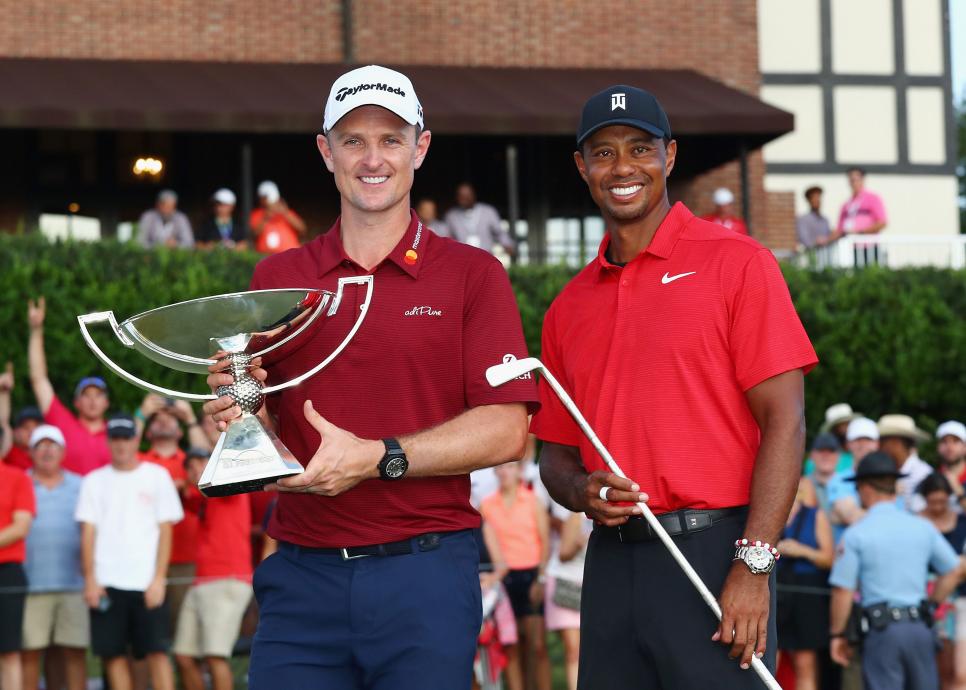The point about the FedEx Cup Playoffs that too many people are still missing – Australian Golf Digest

- by Admin
- August 20, 2024

Golf is lucky to have the FedEx Cup.
For most of the last 18 years, such a statement would have been received as PGA Tour propaganda or shilling for the title sponsor, as the season finale has often been criticized as bloated, clumsy and boring. Also confusing, with awkward trophy presentations for two different winners, as well as a forgettable scoring system that gave Steve Sands a harder job than Steve Kornacki. Meanwhile, extravagantly outsized purses, which have definitely made the players lucky to have the FedEx Cup, seemed like a desperate attempt to buy love.
Maybe because the tour tried so hard, it’s always been difficult for commentators to say anything nice about the FedEx Cup.
But I’m predicting that this kneejerk reaction will change. Not because years of constant refinements—like reverse engineering the scoring system so that the winner of the Tour Championship and the FedEx Cup are always one in the same—have reached a tipping point. Nor has the Cup becoming even more opulent—with the LIV encroachment pushing the tour to raise this year’s total bonus pool to $100 million, with $25 million going to the winner—got anything to do with it either.
What will drive the FedEx Cup to go from hazed newcomer to trusted flag carrier is the sudden realization and appreciation, born of crisis, for how it has always done its utmost to give the PGA Tour a showcase. To borrow the mantra of the tour’s currently paused policy board, the FedEx Cup has “improved the product.”
At a time in which the PGA Tour has been shaken by the continued looming presence of the LIV Golf League, the FedEx Cup playoffs give the tour three straight weeks to display its institutional and star-laden power in a fierce competition for its biggest prize. In the process, it hammers home to its players, in actions more than words, the message that playing on the PGA Tour remains their best career choice.
More From Golf Digest Golf Digest Logo Glory’s Cost: Will money ruin the chase for golf greatness?  FedEx St. Jude Championship Agony (Tom Kim) and ecstasy (Eric Cole), among losers and winners in battle to advance in FedEx Cup Playoffs
FedEx St. Jude Championship Agony (Tom Kim) and ecstasy (Eric Cole), among losers and winners in battle to advance in FedEx Cup Playoffs  FedEx Cup 101 How the FedEx Cup Playoffs work: The format, the stakes and the $100 million jackpot
FedEx Cup 101 How the FedEx Cup Playoffs work: The format, the stakes and the $100 million jackpot
There was no question about that back in 2007, which may have made the creation of the FedEx Cup Playoffs seem forced. Personally, I thought the goal of a more structured calendar that provided a beginning and climatic end rather than a schedule that seemed like it was forever following of the sun was a good idea.
I liked the very first season-ender, the Nabisco Championship of Golf in 1987, when it shocked the golf world with a then largest-ever purse of $2 million shared among only 30 players, with $360,000 for first place and an obscene $32,000 guaranteed for last. It helped that Tom Watson, three years without a victory after an extended run as the best player in the game, lent some old-world gravitas by winning.
Qualification for the Nabisco bonanza happened through an innovative weekly point system that incentivized the game’s stars to play more often, a paradigm that has endured. After Nabisco’s departure, I loved the first Tour Championships in the early 1990s at Pinehurst and Olympic Club. When FedEx became the sponsor, I forgave early stumbles with the arcane point system and wished that the finale would occasionally move to classic venues other than East Lake. But ending the season in August to get away from football was the right call.
Rather than be revolted, I found the most controversial change to the Playoffs, the staggered start at the Tour Championship that began in 2019, ingenious. Yes, it’s contrived to allocate players starting scores under par based on their position in the FedEx Cup standings, and almost counterintuitive to the principles of an otherwise scratch competition. But the problem of having different winners of the Tour Championship and the FedEx Cup be crowned at the same trophy ceremony had to be fixed. And as it turns out, after the first round, the starting stroke discrepancies are largely forgotten, and everyone plays on. I’m willing to trust that the tour’s algorithms have made the starting stroke differences—which to me are logical and legitimately earned —equitable. Maybe too much
The FedEx Cup has been a vehicle for appeasing the tour’s stars at a time when one of the renegade league’s main appeals is a lighter schedule. As Jon Rahm said after going to LIV, “I’m getting paid more to play the same sport and have more time. I don’t know about most people, but that sounds great to me.” In response, the tour has decreed that players who finish in the top 50 on the FedEx points list (which was determined on Sunday by the 50 players who advanced to this week’s BMW Championship) are exempt the following year for the tour’s eight “signature” events, which offer purses of $20 million with $3.6 million for the winner. Such a move tends to allow the tour’s biggest names to grind less to earn FedEx points, which the other players can choose to regard as unfair or motivating, but better for the product..
It means the tour is following LIV’s lead in allowing less work for more money. But it’s also banking on the FedEx Cup and playoffs to provide something extra that LIV hasn’t been able to develop—the ability for a player to test himself against heavy sampling of the very best players in the world, under pressure greater than those who have been paid guaranteed money. It’s what many greats have remembered as the most fulfilling parts of their careers.

The staggered start used at the Tour Championship since 2019 has taken its share of criticism, but it’s worth it to eliminate the awkward year’s where more than one person was winning a trophy at the season-finale.
Kevin C. Cox/Getty Images
Last week’s first FedEx playoff event in Memphis was full of intense, serious tension, as the players at the top of the leaderboard tried to win and those toward the bottom tried arguably even harder to move on. Which is what professional golf at its best supposed to feel like.
It’s not how LIV feels, at least through the television screen. Last week at the Greenbrier, the LIV event offered arguably the best final-day matchup in its three-year history, as Rahm and Brooks Koepka went mano a mano for 18 holes and then into sudden death. There was a lot of pride for the two alphas. But with subtext of their huge signing bonuses, who won the $4 million for first or the $2.5 million for second in an event that didn’t offer World Ranking points or have a discernible historical context simply didn’t matter that much. Both players have found out, maybe not exactly the hard way but in an eye-opening way nonetheless, that it’s the league that makes the player more than the player who makes the league.
Because LIV doesn’t play again until next month, the PGA Tour’s players will have the stage alone at both the BMW and the Tour Championship. Scottie Scheffler, the reigning two-time PGA Tour Player of the Year who has held the No. 1 starting position at the last two Tour Championships, likely will again. A tour de force to crown a historic year wouldn’t hurt, nor would a showdown with his only possible Player of the Year rival, Xander Schauffele. And as negotiations with the Saudi-funded league ostensibly continue, the tour’s bargaining position in retaining its structure and stature gains strength, even if only in the short term and only marginally, the better the playoffs.
The FedEx Cup is on the schedule for 2025, but who knows after that. Whenever it ends, it will leave a worthy legacy by doing a difficult thing very well. As long as it stays in place, and especially in this moment, golf is lucky.
This article was originally published on golfdigest.com
The Latest News
-
January 10, 2025Emma Raducanu dismisses fitness concerns in optimistic Australian Open verdict
-
January 10, 2025Emma Raducanu avoids drugs test concern just days before Australian Open after flare up
-
January 10, 2025Medvedev vying to steal two titles off young guns
-
January 10, 2025Not-so-new kid on the block: ‘mature’ Litchfield set for Ashes | cricket.com.au
-
January 10, 2025Voll’s form putting pressure on Ashes selection calls: Nitschke | cricket.com.au





